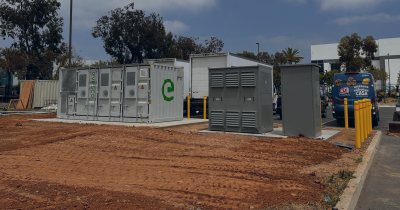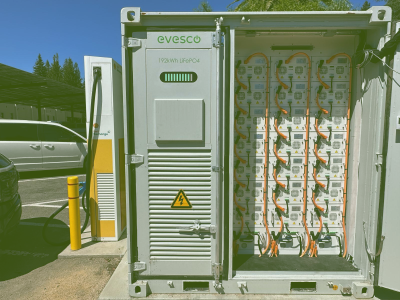Levels of EV charging

Electric vehicle (EV) adoption is accelerating faster than experts predicted. This accelerated adoption results from government incentives, an increased choice of vehicles, increased public and private funding for EV adoption, and a cultural shift to greener and cleaner vehicles helping to push down harmful emissions. With the rise in EV adoption, it is essential to understand the different levels of EV charging and how these levels of charging can affect the type of electric vehicle supply equipment (EVSE) you consider.
The Different Levels of EV Charging
There are three EV charging levels; Level 1, Level 2, and Level 3. There are differences between each charging level. However, as a general rule, the higher the Level, the higher the power output from the charger and the faster it can charge.
Level 1 EV Charging
Level 1 EV charging utilizes the slowest EV charger available, which provides between 1 kW and 1.8 kW of power through a standard 120-volt AC outlet. Level 1 EV charging is available in North America and uses a standard 3-prong household plug on one end and a J1772 (Type 1) EV connector on the other, which plugs into the vehicle. Level 1 chargers are unavailable in Europe due to standard residential electricity being 230-volt.
How Fast is a Level 1 EV Charger?
Level 1 is the slowest of the electric car charging levels and can take between 22-40 hours to fully charge a standard battery electric vehicle (BEV) from empty. An hour of charging with a Level 1 charger will give your EV between 3-7 miles (4-11 kilometers) of range. All Battery Electric Vehicles (BEVs) and Plug-in Hybrids (PHEV) can use a Level 1 EV charger, and they are usually provided free when purchasing the vehicle.
Level 1 EV chargers are almost always used at home as a trickle charger or as a backup when there are no Level 2 or Level 3 charging stations available. Unless you are charging your vehicle at home, a Level 1 EV charger is not very practical due to its slow charging speed.
| EV Charging Level | Connector Type | Typical Output Power | Estimated Charge Time (40kWh) | Estimated Range Per Hour for Charging | User case |
| Level 1 | J1772 | 1 kW – 1.8 kW | 22 – 40 hours | 3 – 7 miles (4 – 11 kilometers) | Home / Backup |

Level 2 EV Charging
Level 2 EV charging is much faster than Level 1 and utilizes a 208-volt to 240-volt AC outlet in North America and a 230-volt (single-phase) or 400-volt (three-phase) outlet in Europe. In North America, Level 2 chargers top out at 19.2 kW (80A), and in Europe, it’s 22 kW. A Level 2 charger can come with various additional functions and features, such as RFID cards, load balancing, and OCCP (Open Charge Point Protocol) networking.
The EV connector type for North America and Japan is J1772 (Type 1); for Europe, it’s a Mennekes (Type 2) connector. Level 2 charging stations can be provided with tethered charging cables (hard-wired to the charging station) or untethered with just a socket (you plug in your charging cable). Currently, Level 2 EV charging is the most common level of EV charger installed globally. However, the installation of Level 3 chargers is growing.
How Fast is a Level 2 EV Charger?
A Level 2 charger can be as much as 19 times faster than a Level 1 charger, depending on the power output and the charge acceptance rate of the vehicle you are charging. An hour of charging with a Level 2 charger can provide a range between 10-75 miles (16-120 kilometers).
Level 2 charging is the most common type used in public charging stations. This equipment can be installed at home, the workplace, and in many public locations such as hotels, retail parks, and supermarkets. It is the ideal charging level for overnight charging or while at work.
| EV Charging Level | Connector Type | Typical Output Power | Estimated Charge Time (40kWh) | Estimated Range Per Hour for Charging | User case |
| Level 2 | J1772 (North America) Mennekes (Europe) | 3 kW – 22 kW | 2 – 13 hours | 10 – 75 miles (16 – 120 kilometers) | Workplace, hotels, overnight charging |

Level 1 and Level 2 EV charging are both defined as AC-type EV chargers. Before we move on to Level 3 EV charging it is important to understand the difference between AC-type EV chargers and DC-type EV chargers.
The Difference between AC and DC EV Charging
There are two types of electrical currents for EV charging: AC (Alternating Current) and DC (Direct Current).
The power that comes from the electricity grid is AC. EV batteries store energy as DC. AC charging converts AC to DC inside the vehicle, which is slower, while DC charging converts power at the station, bypassing the on-board charger and delivering more power faster.
This is what makes DC EV charging faster than AC EV charging.

With that in mind, let’s take a look at the fastest EV charger level – Level 3.
Level 3 EV Charging
Also called DC fast charging, this level is significantly faster than Level 2 EV charging. Level 3 charging stations are the market’s quickest and most powerful EV charging options. A Level 3 charging station utilizes a three-phase supply, 480-volt in North America and 400-volt in Europe, with chargers capable of outputting over 360 kW of power.
A Level 3 charging station also comes with various functions and features, such as dynamic power distribution, multi-charging protocol cables, and networking via OCPP. There are stationary Level 3 chargers and portable Level 3 charging stations available.
CCS (Combined Charging System), CHAdeMO, and Tesla Superchargers (NACS) provide Level 3 EV charging.
Although the industry often labels all DC fast charging as Level 3, it originally referred to charging above 400 kW.
How Fast is a Level 3 EV Charger?
As mentioned earlier, a Level 3 charger converts AC to DC within the charger itself, resulting in faster power delivery directly to the EV battery. A Level 3 charger can fully charge a standard electric car in under 20 minutes, depending on its charge acceptance rate.
Public service stations near highways often host Level 3 EV chargers, which are essential for long journeys.There are several other locations where Level 3 EV charging is becoming more critical, including EV charging for fleets and auto dealerships. Any place where people park for short periods or the vehicle is in constant use – i.e., delivery vehicles.
| EV Charging Level | Connector Type | Typical Output Power | Estimated Charge Time | Estimated Range Per Hour for Charging | User case |
| Level 3 | CCS 1 (North America) CCS 2 (Europe) CHAdeMO (Japan) | 30 kW – 360 kW | 15 mins – 1.5 hours* depending on charge acceptance rate | 120 – 1400+ miles (193 – 2250+ kilometers) | Fleets, Car dealerships, highway services, logistics hubs, distribution centers |




